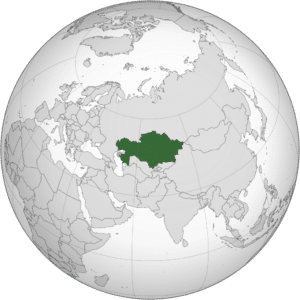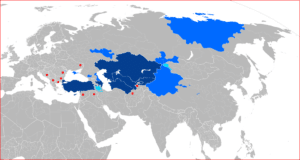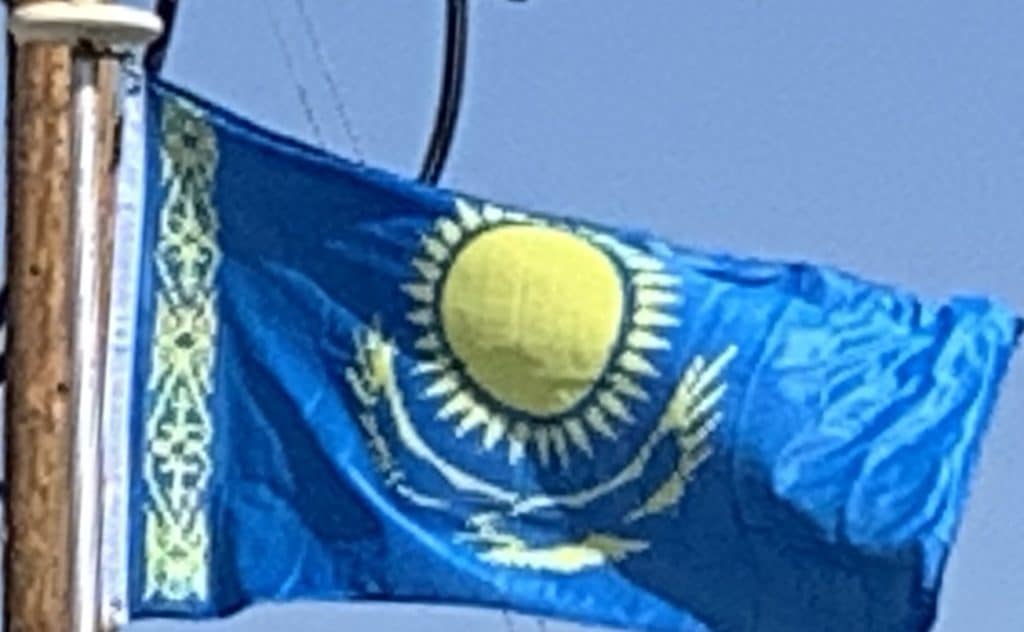Introduction:
Kazakhstan, officially the Republic of Kazakhstan, is a transcontinental country mainly located in Central Asia with a smaller portion west of the Ural in Eastern Europe. It is the world’s largest landlocked country, and the ninth-largest country in the world, with an area of 2,724,900 square kilometres (1,052,100 sq mi). Kazakhstan is the most dominant nation of Central Asia economically, generating 60% of the region’s GDP, primarily through its oil and gas industry. It also has vast mineral resources.

Kazakhstan is officially a democratic, secular, unitary, constitutional republic with a diverse cultural heritage. Kazakhstan shares borders with Russia, China, Kyrgyzstan, Uzbekistan, and Turkmenistan, and also adjoins a large part of the Caspian Sea. It does not border Mongolia, although they are only 37 kilometers apart. The terrain of Kazakhstan includes flatlands, steppe, taiga, rock canyons, hills, deltas, snow-capped mountains, and deserts. Kazakhstan has an estimated 18.3 million people as of 2018. Its population density is among the lowest, at less than 6 people per square kilometre (15 people per sq mi). Since 1997, the capital is Nur-Sultan, formerly known as Astana. It was moved from Almaty, the country’s largest city.
The territory of Kazakhstan has historically been inhabited by nomadic groups and empires. In antiquity, the nomadic Scythians inhabited the land and the Persian Achaemenid Empire expanded towards the southern territory of the modern country. Turkic nomads, who trace their ancestry to many Turkic states such as the First and Second Turkic Khaganates, have inhabited the country throughout its history.
In the 13th century, the territory was subjugated by the Mongol Empire under Genghis Khan. By the 16th century, the Kazakh emerged as a distinct group, divided into three jüz (ancestor branches occupying specific territories). The Russians began advancing into the Kazakh steppe in the 18th century, and by the mid-19th century, they nominally ruled all of Kazakhstan as part of the Russian Empire. Following the 1917 Russian Revolution, and subsequent civil war, the territory of Kazakhstan was re-organised several times. In 1936, it was made the Kazakh Soviet Socialist Republic, part of the Soviet Union.

Kazakhstan was the last of the Soviet republics to declare independence during the dissolution of the Soviet Union in 1991. Nursultan Nazarbayev, the first president of Kazakhstan, was characterized as an authoritarian, and his government was accused of numerous human rights violations, including suppression of dissent and censorship of the media. Nazarbayev resigned in March 2019 but was made the Kazakh Security Council’s chairman-for-life.
Senate chairman Kassym-Jomart Tokayev succeeded Nazarbayev as president. In the 21st century, Kazakhstan has worked to develop its economy, especially its dominant hydrocarbon industry. Human Rights Watch says that “Kazakhstan heavily restricts freedom of assembly, speech, and religion.” Other human rights organisations regularly describe Kazakhstan’s human rights situation as poor.
According to the 2009 census, Kazakhstan’s 131 ethnicities include Kazakhs (65.5% of the population), Russians, Uzbeks, Ukrainians, Germans, Tatars, and Uyghurs. Per 2009 census, Islam is the religion of about 70% of the population, with Christianity practised by 26%. Kazakhstan officially allows freedom of religion, but religious leaders who oppose the government are suppressed.
